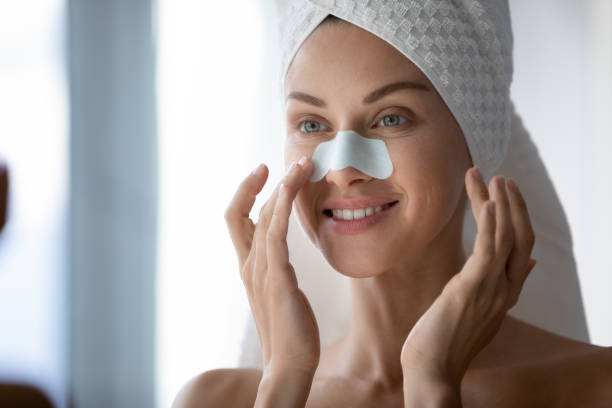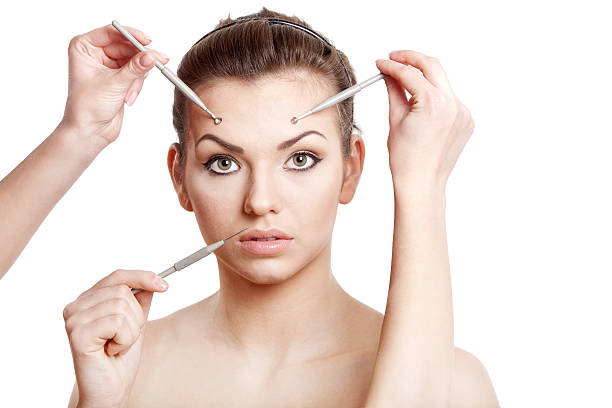Comedoz Removal
Description
Comedones are small bumps that form when hair follicles become clogged with oil, dead skin cells, and bacteria. There are two main types of comedones: open comedones (blackheads) and closed comedones (whiteheads). While professional treatment is not always necessary for comedone removal, there are several methods you can try to help eliminate them:
Good Skincare Routine
- Cleanse your face twice a day using a gentle cleanser to remove excess oil, dirt, and dead skin cells.
- Exfoliate regularly to help unclog pores and remove dead skin cells. Use a chemical exfoliant containing salicylic acid, glycolic acid, or lactic acid.
- Avoid using oil-based or pore-clogging skincare products.
- Use non-comedogenic (non-pore-clogging) moisturizers and sunscreen.


Manual Extraction:
- After cleansing your face, you can use a comedone extractor, a small metal tool with a loop or spoon-shaped end, to gently extract comedones.
- Ensure that your skin and the extractor are clean to minimize the risk of infection.
- Apply gentle pressure around the comedone to extract its contents. If the comedone doesn’t come out easily, do not force it as it can cause skin damage or scarring.
Topical Treatments:
- Over-the-counter topical treatments containing ingredients like salicylic acid, benzoyl peroxide, or retinoids may help in reducing comedones.
- These products can help exfoliate the skin, reduce oil production, and promote cell turnover, which can prevent the formation of new comedones.


Professional Treatments:
- If comedones persist or if you have a severe case of acne, it may be helpful to consult a dermatologist.
- A dermatologist can perform professional extractions, prescribe topical medications, or recommend other treatments like chemical peels, microdermabrasion, or laser therapy to address comedone-related issues.
0
+
Customer
0
+
Certified
0
+
Services
0
+
Specialist
Frequently Asked Questions
we are dedicated to helping you achieve radiant and healthy skin. Our team of experienced and licensed estheticians and dermatologists are committed to providing top-notch skin care services tailored to your unique needs.
Comedones are small, non-inflammatory skin lesions that occur when hair follicles become clogged with oil, dead skin cells, and other debris. There are two types of comedones: open comedones (blackheads) and closed comedones (whiteheads).
Comedo removal refers to the process of extracting blackheads and whiteheads from the skin. This can be done using various methods, including manual extraction, topical treatments, and professional procedures.
Can I remove comedones at home?
Yes, you can remove some comedones at home using gentle and proper techniques. However, it’s essential to be cautious to avoid damaging the skin or causing infections. Manual extraction should be done with clean hands and sanitized tools, and it’s best to avoid excessive force.
Is it better to have comedones professionally removed?
Professional comedo removal, performed by a licensed esthetician or dermatologist, is generally safer and more effective. Professionals have the experience and knowledge to extract comedones without causing harm to the skin.
What are the risks of improper comedo removal?
Improper comedo removal, especially squeezing too forcefully or using dirty tools, can lead to skin damage, redness, inflammation, and even infection. It may also worsen the condition or cause scarring.
Can comedone removal completely eliminate blackheads and whiteheads?
While comedo removal can temporarily clear existing blackheads and whiteheads, it may not completely prevent them from reoccurring. It’s essential to maintain a consistent skincare routine to prevent future comedone formation.
What topical treatments can help with comedone removal?
There are several over-the-counter and prescription topical treatments available, such as retinoids, salicylic acid, and benzoyl peroxide, which can help prevent and treat comedones by unclogging pores and promoting exfoliation.
Are there any professional procedures for comedone removal?
Yes, dermatologists and estheticians may offer treatments like chemical peels, microdermabrasion, and comedone extraction facials to effectively remove comedones and improve overall skin texture.
To prevent comedones, it’s essential to maintain a consistent skincare routine that includes gentle cleansing, exfoliation (using mild exfoliants), and regular use of non-comedogenic moisturizers. Avoiding heavy and pore-clogging makeup products can also help.
Can certain lifestyle factors contribute to comedone formation?
Yes, certain lifestyle factors like excessive oil production, hormonal fluctuations, and a diet high in refined sugars may contribute to comedone formation. Managing stress and adopting a healthy lifestyle can also help improve overall skin health.
Always consult with a dermatologist or licensed skincare professional if you have concerns about comedones or if you’re unsure about the best approach for your skin type. They can provide personalized recommendations and guide you on the proper comedo removal techniques.
Get in touch with us
we are dedicated to helping you achieve radiant and healthy skin. Our team of experienced and licensed estheticians and dermatologists are committed to providing top-notch skin care services tailored to your unique needs.